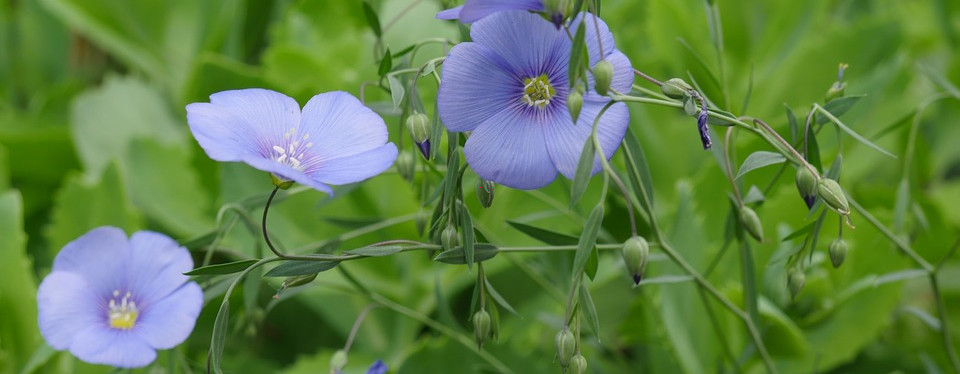Linen / Flax
| abt. 3000 B.C. |
Flax is cultivated in Bablyon.
|
| abt. 650 B.C. |
Hippocrates writes about using flax for the relief of abdominal pain. In the same era, Theophrastus recommends the use of flax mucilage as a cough remedy.
|
| abt. 1st century A.D. |
Tacitus praises virtues of flax.
|
| abt. 8th century A.D. |
Charlemagne considered flax so important for the health of his subjects that he passed laws and regulations requiring its consumption.
|
| abt. 15th century A.D. |
Hildegard von Bingen used flax meal in hot compresses for the treatment of both external and internal aliments. |
WINTER FLAX
In France, a new variety of winter flax has been developed. It can be sown in September and harvested in June. The advantages of winter flax are various. Retting conditions are better in June than in July, when spring crops are ready. Generally, growing fields are idle in winter, so flax cultivation helps to prevent soil erosion. Also, being able to pull flax a month earlier extends the use of puling machines.
This winter flax called Adélie can grow in temperatures as cold as -10°C, so it can be planted in Germany and in Eastern Europe, where winters are harsh.

